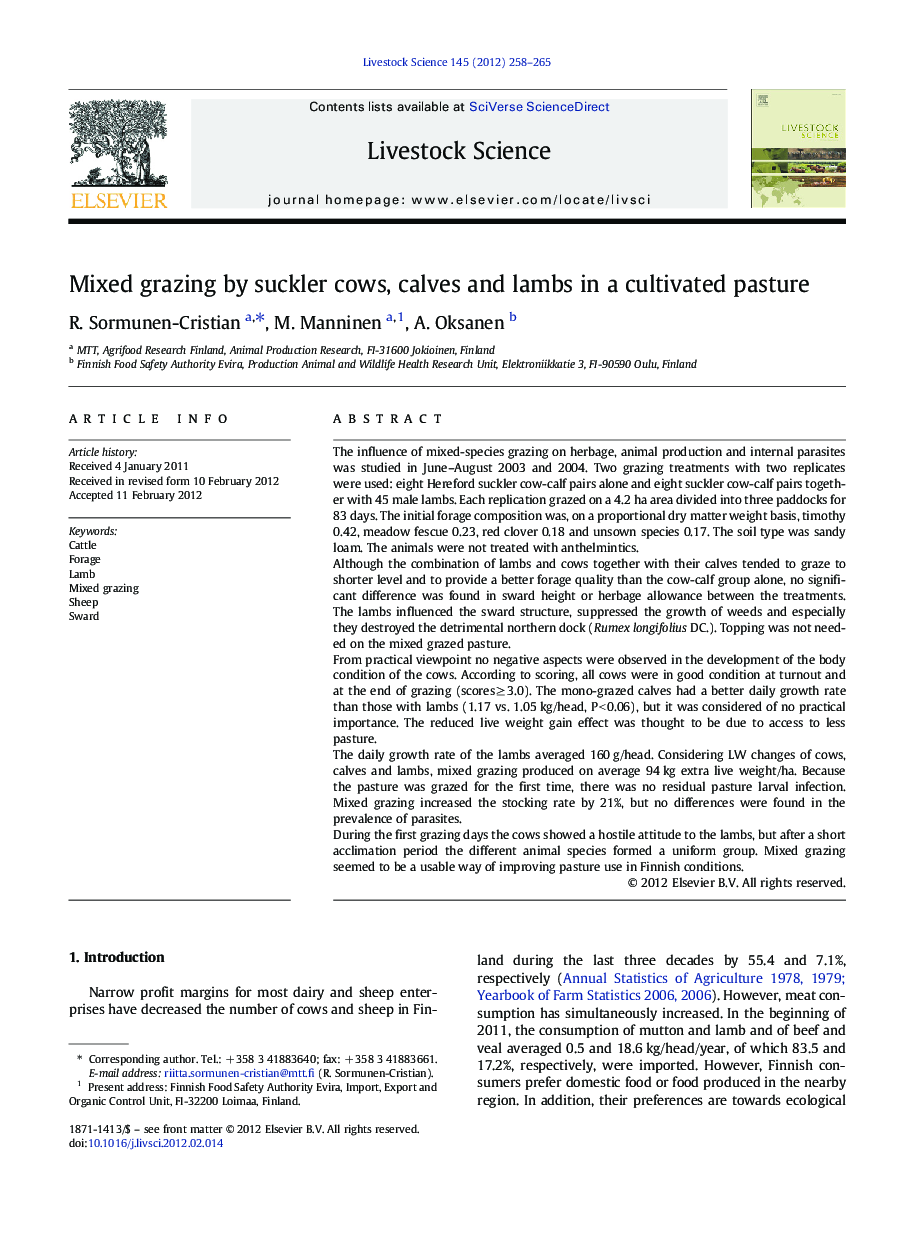| کد مقاله | کد نشریه | سال انتشار | مقاله انگلیسی | نسخه تمام متن |
|---|---|---|---|---|
| 5790588 | 1553987 | 2012 | 8 صفحه PDF | دانلود رایگان |

The influence of mixed-species grazing on herbage, animal production and internal parasites was studied in June-August 2003 and 2004. Two grazing treatments with two replicates were used: eight Hereford suckler cow-calf pairs alone and eight suckler cow-calf pairs together with 45 male lambs. Each replication grazed on a 4.2 ha area divided into three paddocks for 83 days. The initial forage composition was, on a proportional dry matter weight basis, timothy 0.42, meadow fescue 0.23, red clover 0.18 and unsown species 0.17. The soil type was sandy loam. The animals were not treated with anthelmintics.Although the combination of lambs and cows together with their calves tended to graze to shorter level and to provide a better forage quality than the cow-calf group alone, no significant difference was found in sward height or herbage allowance between the treatments. The lambs influenced the sward structure, suppressed the growth of weeds and especially they destroyed the detrimental northern dock (Rumex longifolius DC.). Topping was not needed on the mixed grazed pasture.From practical viewpoint no negative aspects were observed in the development of the body condition of the cows. According to scoring, all cows were in good condition at turnout and at the end of grazing (scores â¥Â 3.0). The mono-grazed calves had a better daily growth rate than those with lambs (1.17 vs. 1.05 kg/head, P < 0.06), but it was considered of no practical importance. The reduced live weight gain effect was thought to be due to access to less pasture.The daily growth rate of the lambs averaged 160 g/head. Considering LW changes of cows, calves and lambs, mixed grazing produced on average 94 kg extra live weight/ha. Because the pasture was grazed for the first time, there was no residual pasture larval infection. Mixed grazing increased the stocking rate by 21%, but no differences were found in the prevalence of parasites.During the first grazing days the cows showed a hostile attitude to the lambs, but after a short acclimation period the different animal species formed a uniform group. Mixed grazing seemed to be a usable way of improving pasture use in Finnish conditions.
Journal: Livestock Science - Volume 145, Issues 1â3, May 2012, Pages 258-265